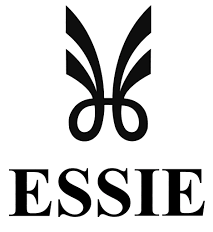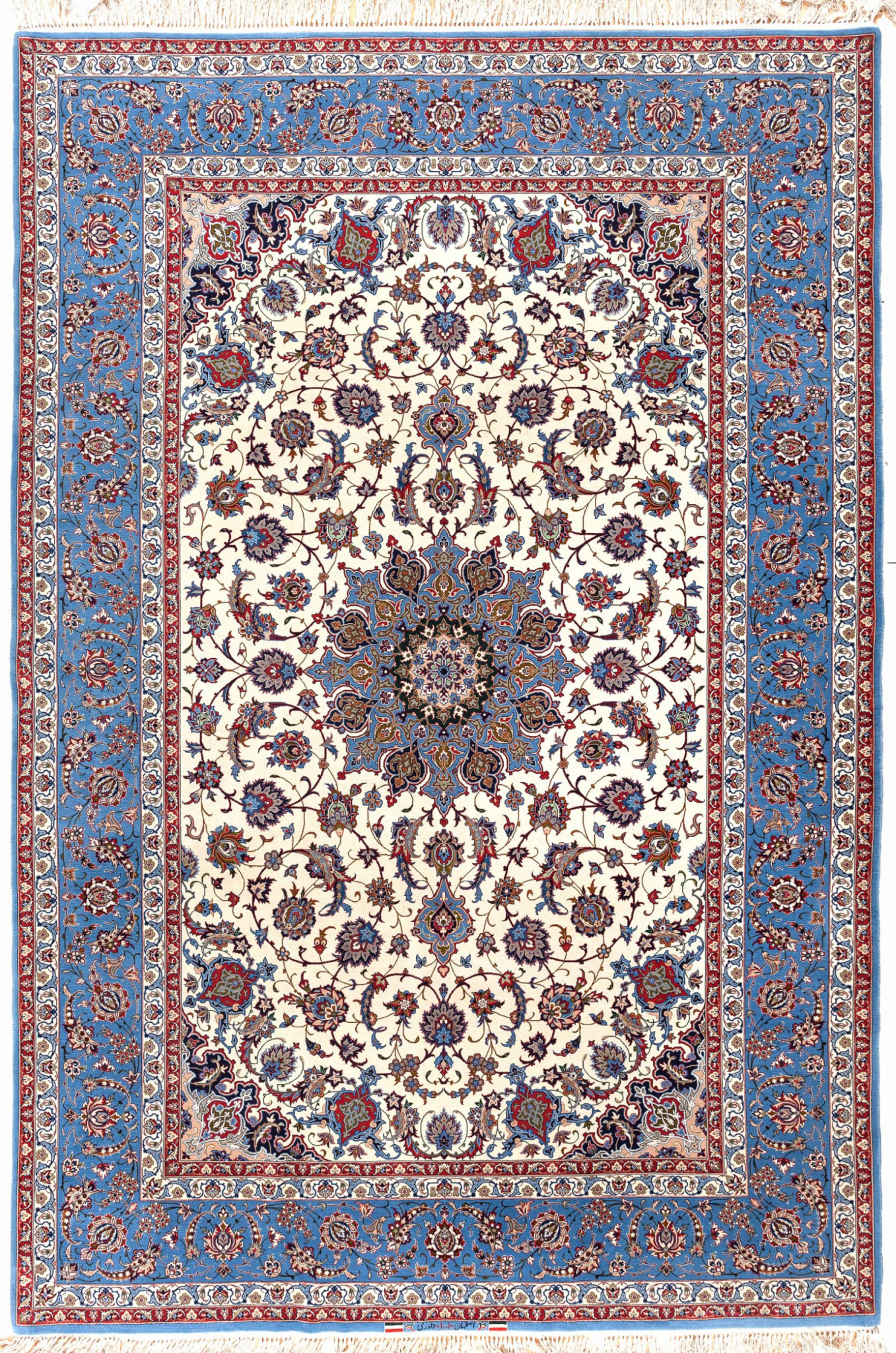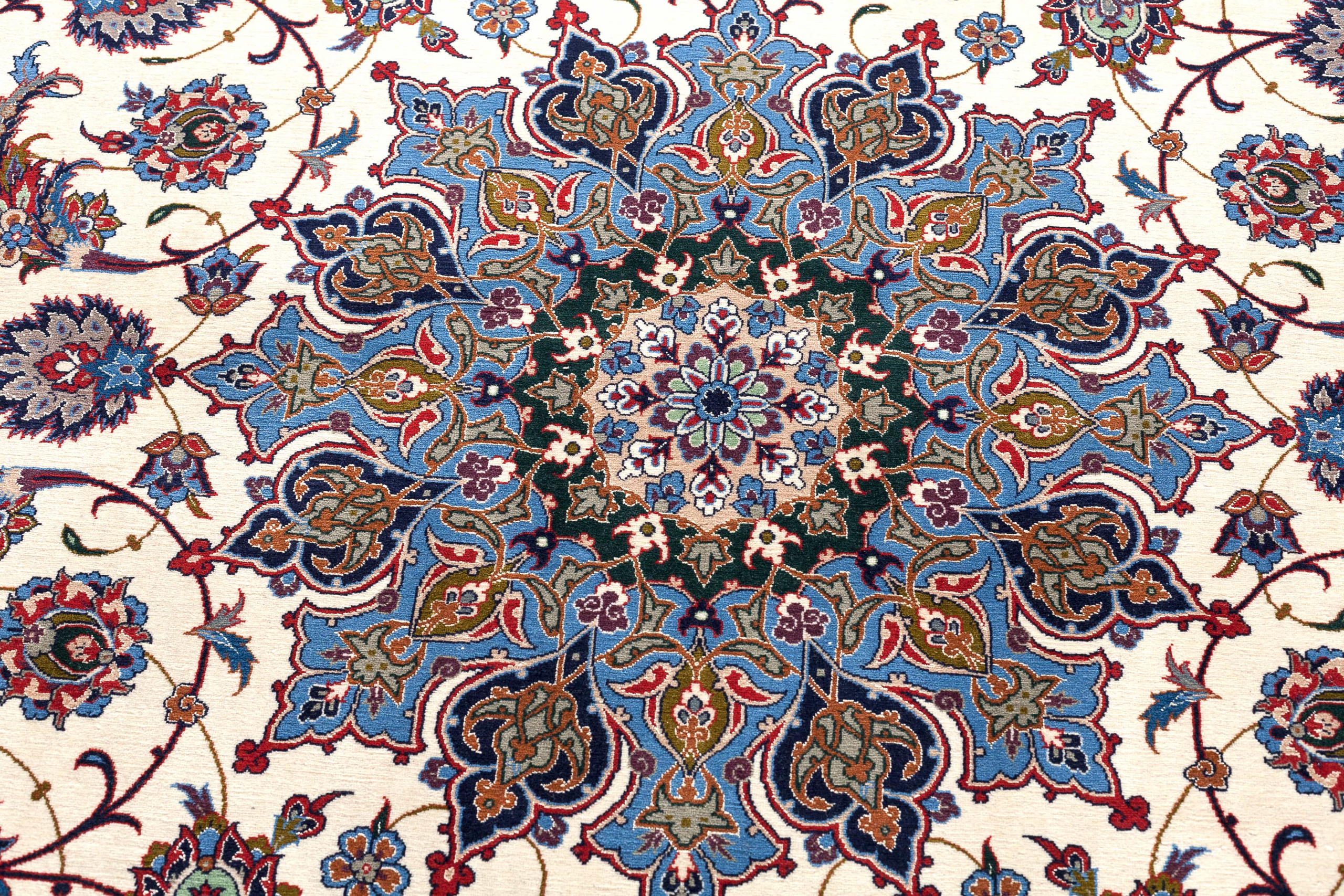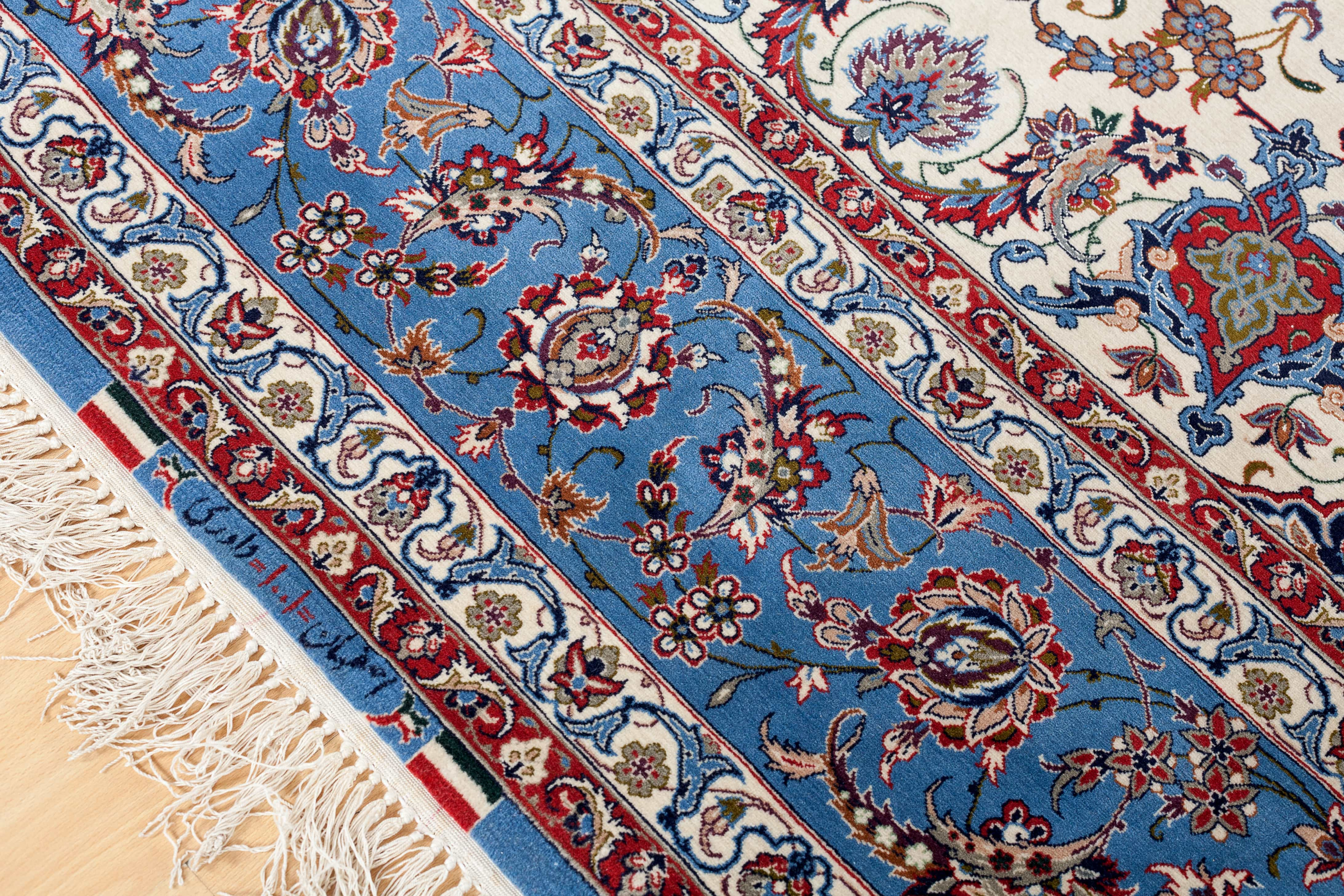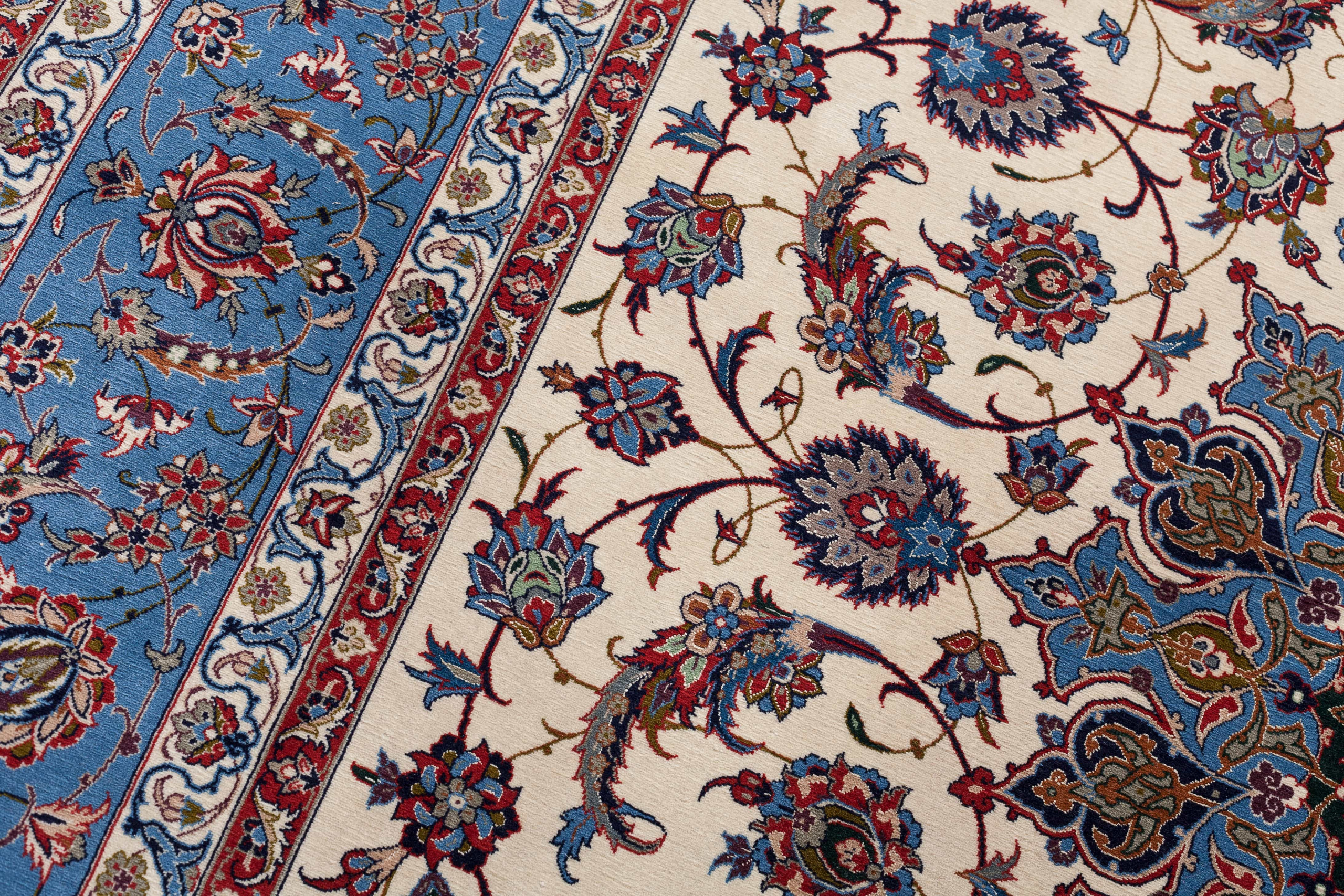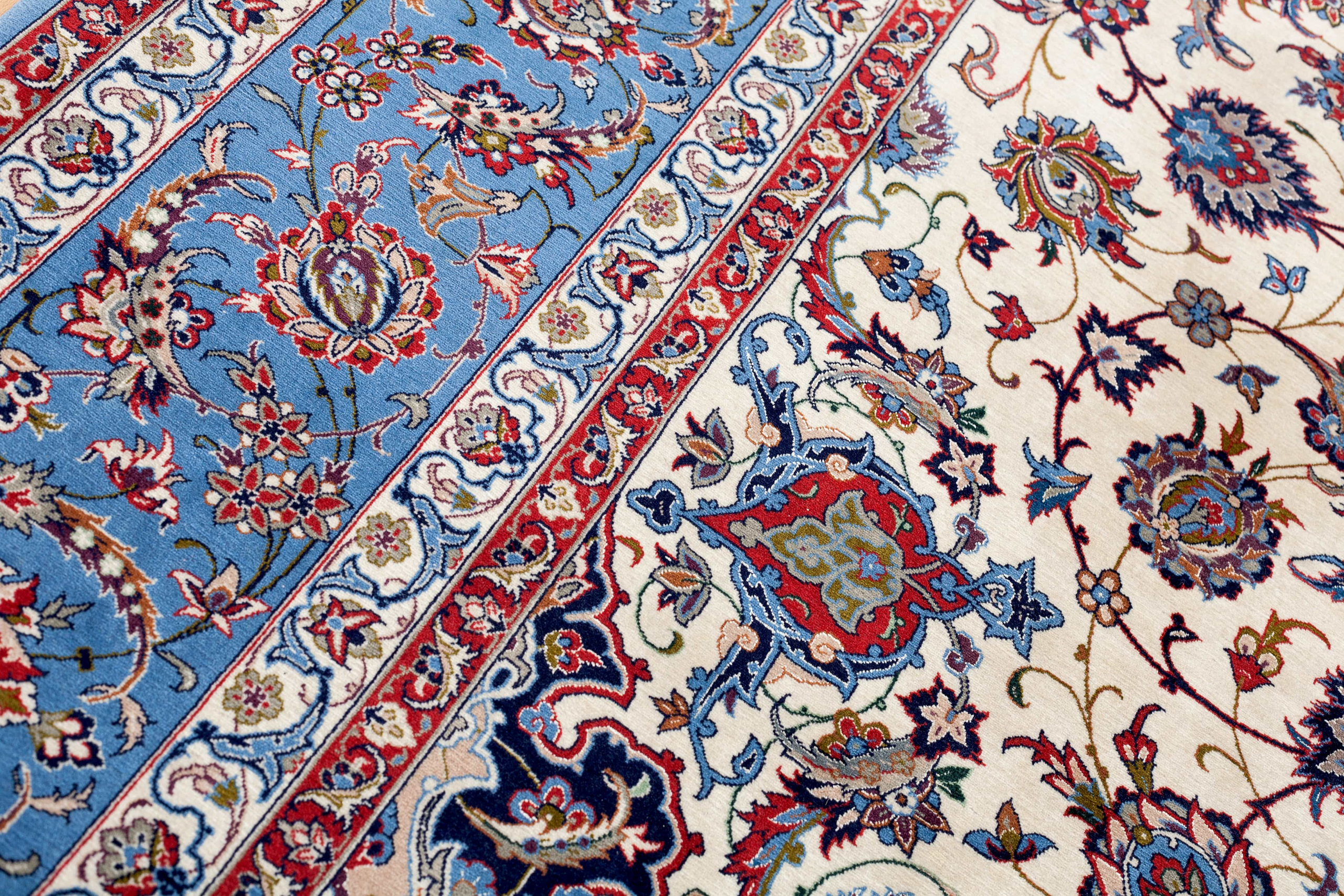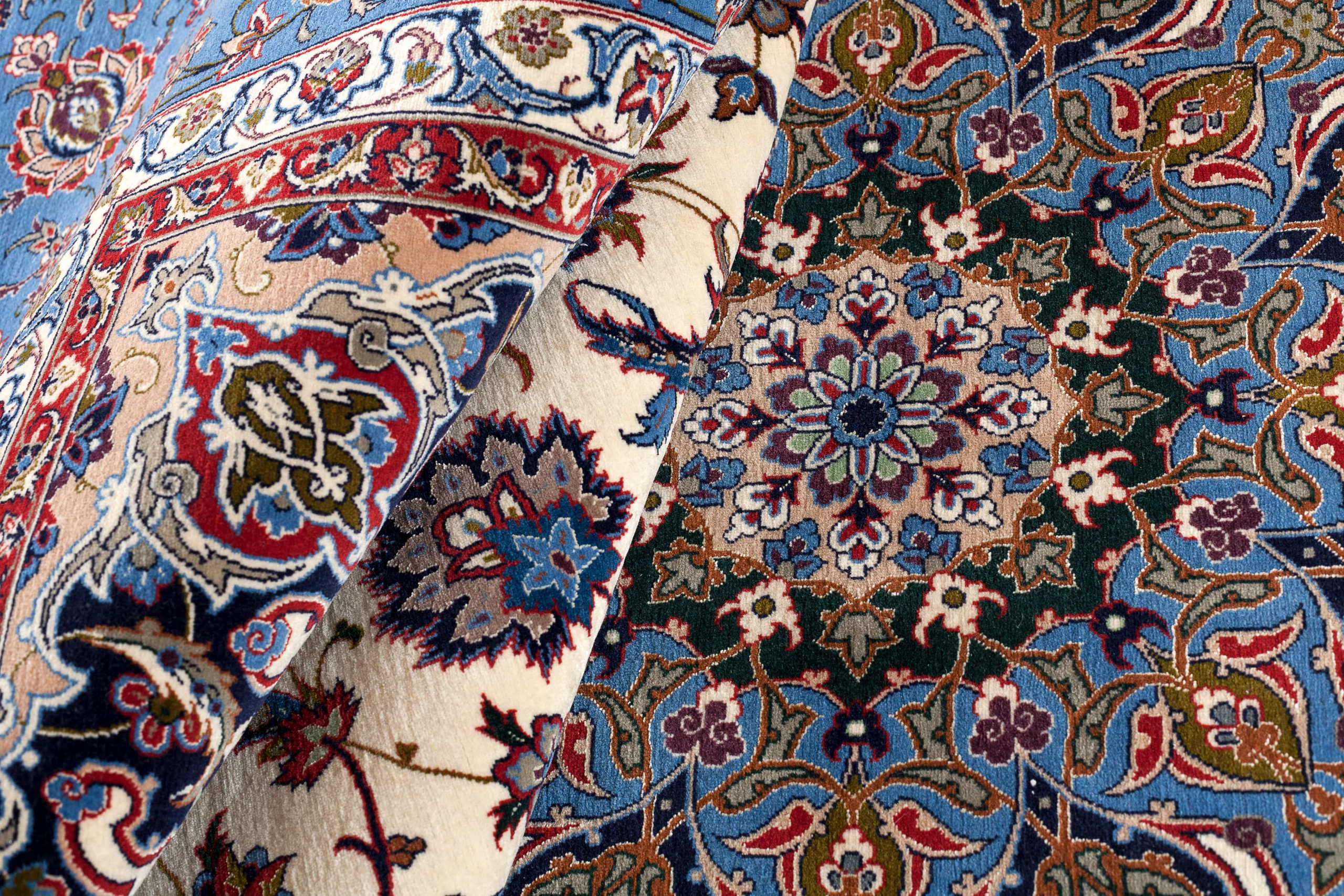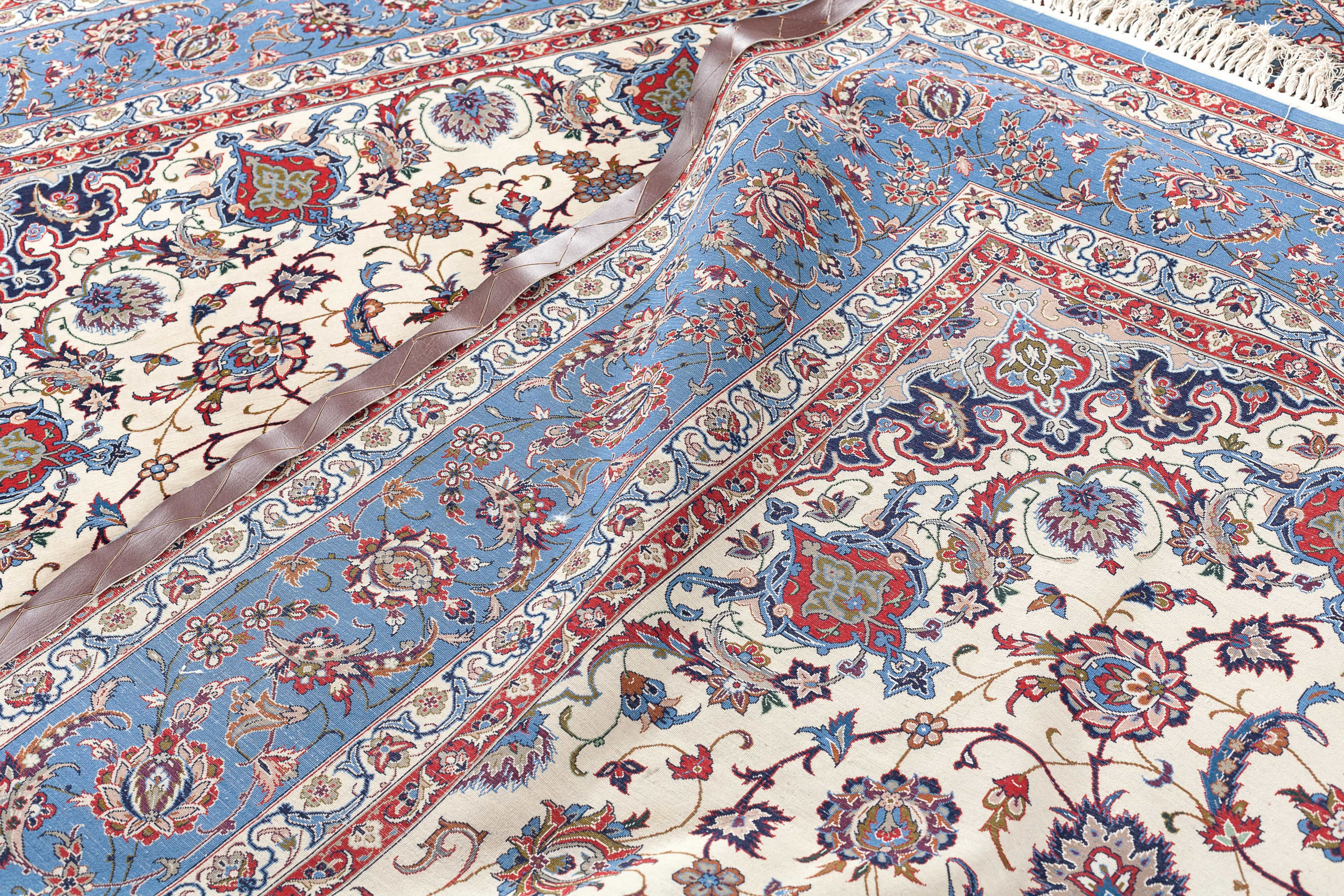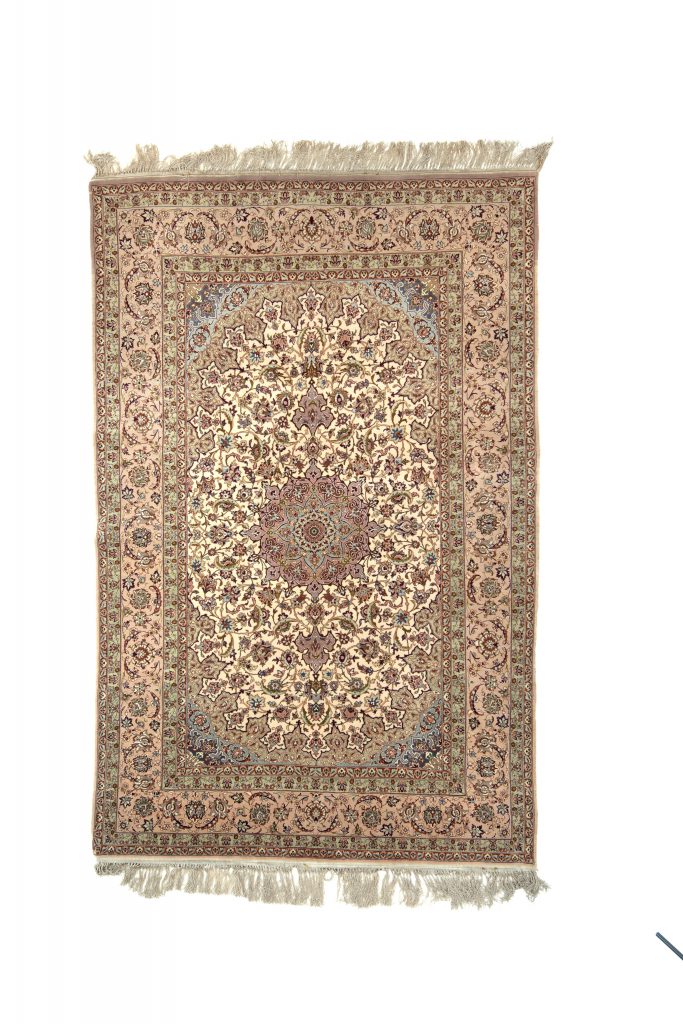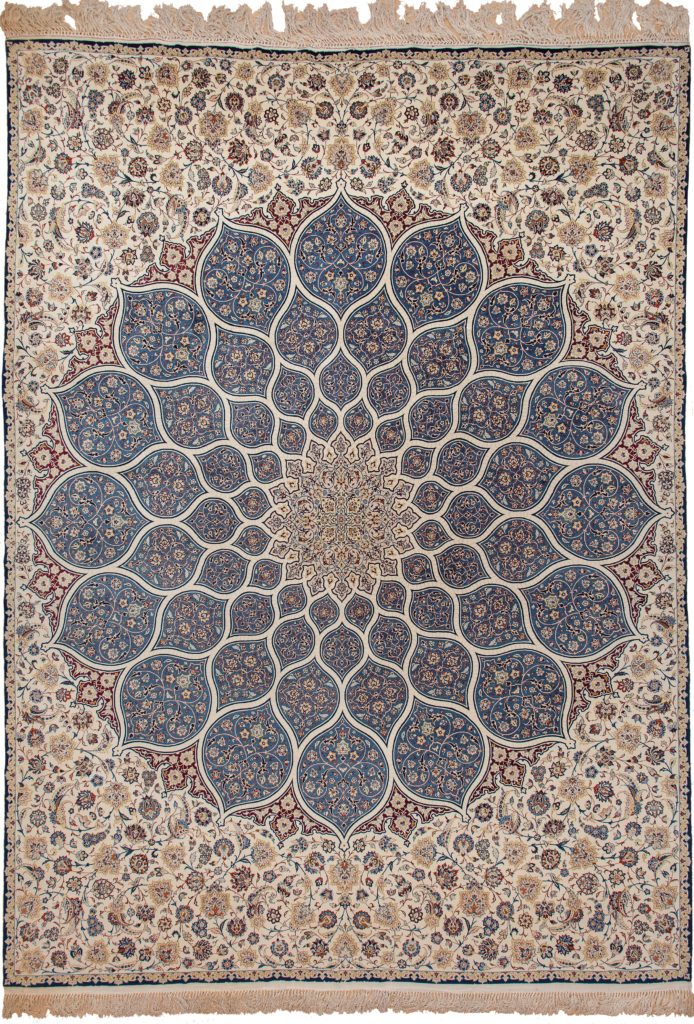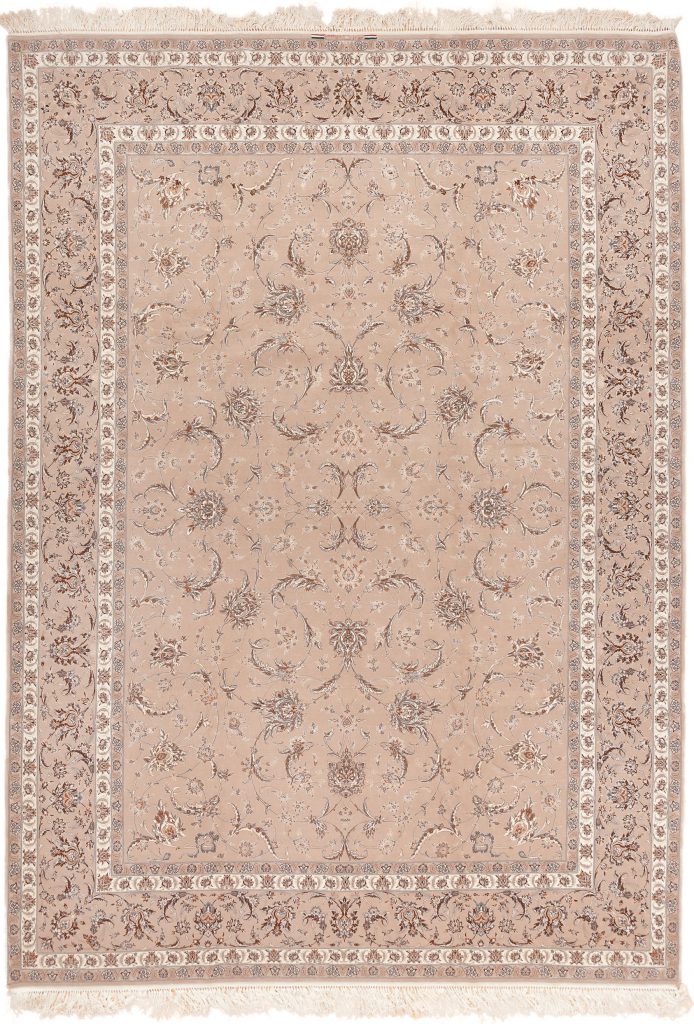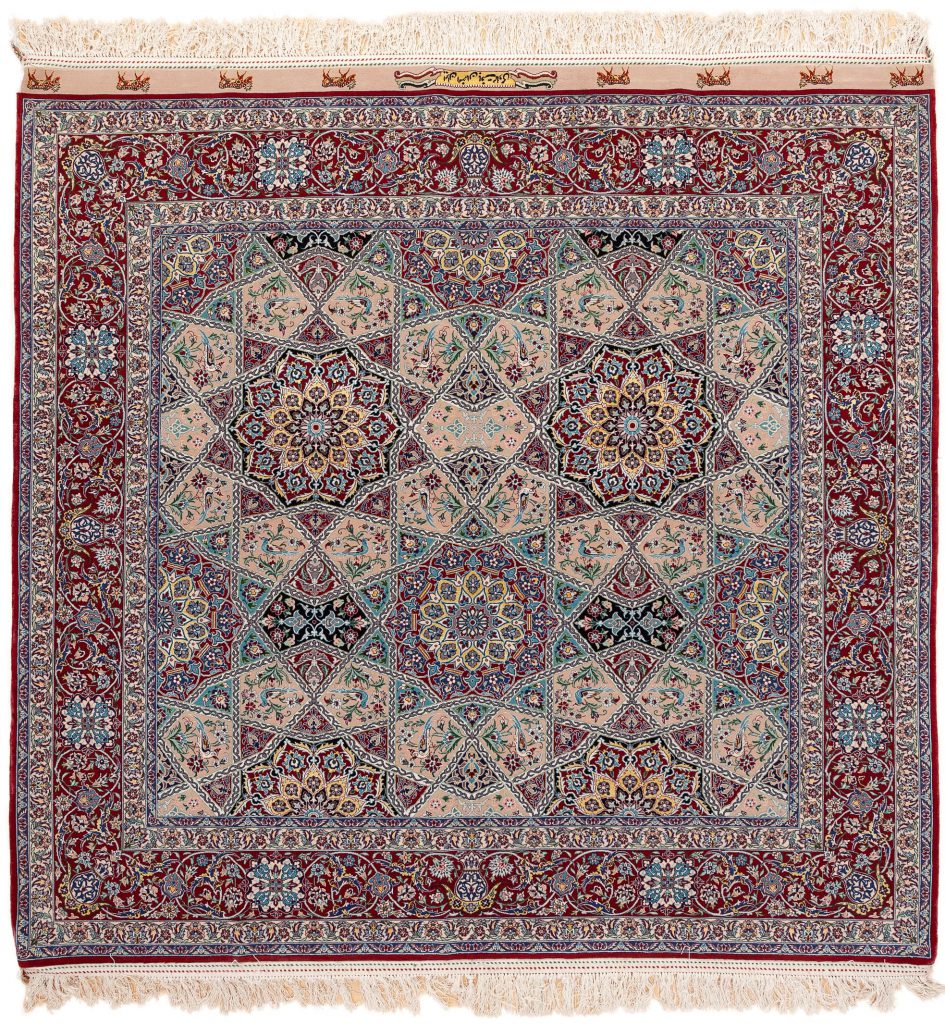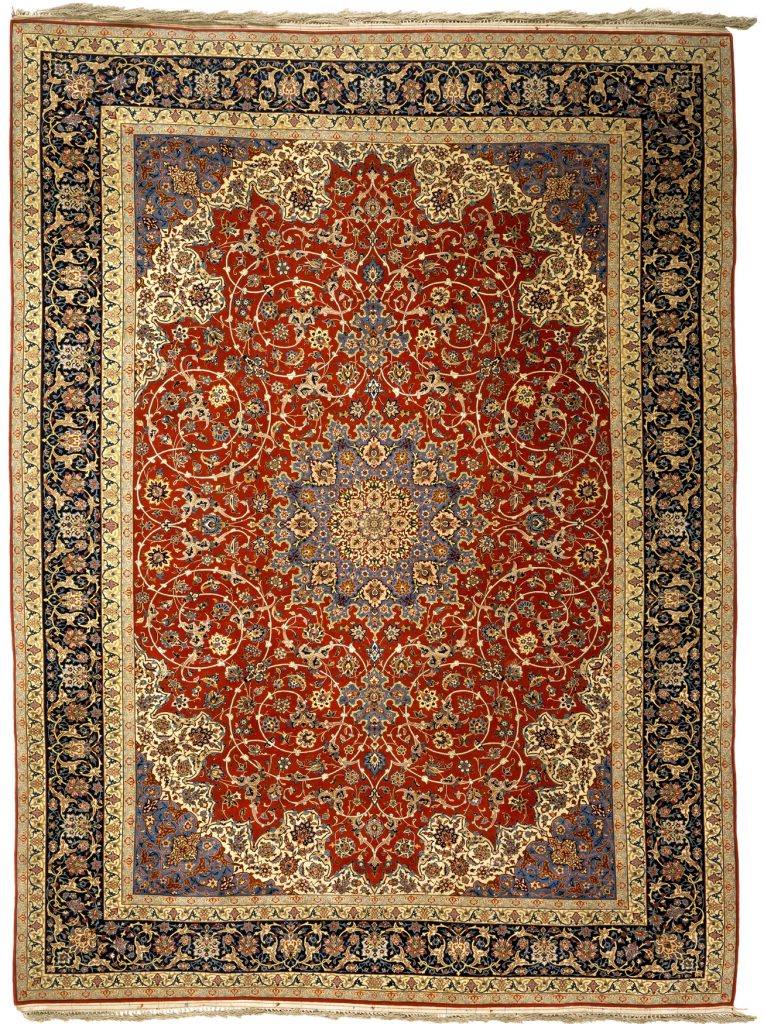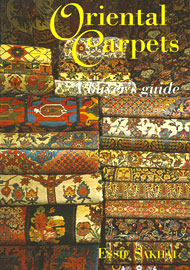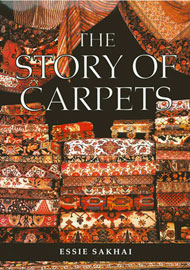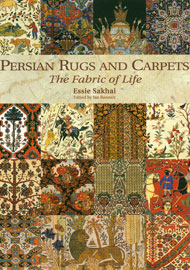Fine Persian Isfahan Rug – Silk and Wool – Signed
Rug #2612Signed Persian Isfahan Rug – Silk and Wool
Signed Persian Isfahan rug handwoven in Iran from silk and wool. Central medallion design.
Esfahan is one of the great historic weaving centres of Iran which sits in the centre of the great fertile western belt that stretches from Tehran in the north through Kashan, Esfahan and down to Shiraz, the capital of Fars in the South. The safavid Shah, Shah Abbas, moved his capital from the city of Qazvin in the North West of Isfahan in the late 16th century and there it remained except for brief intervals in the 18th century, when Mashad and Shiraz were briefly appointed until the Qajars moved the capital once again, and finally, to Tehran in the early 19th-century. Historically, Esfahan occupies in Persian political and cultural history a place similar to that of Saint Petersburg in Russia. Esfahan is undoubtedly the Cultural capital of Persia (Iran), and arguably it’s most beautiful city. Indeed it’s great central-square with the Sheikh Luftullah and Shah mosques, the two great multi arched bridges and other wonderful buildings such as the historic Friday mosque and the Chihil Situne Palace make this one of the greatest cities of the Islamic world.
Carpets have been woven in Esfahan at least since the establishment of royal workshops under Shah Abass in the 1590s. Two groups associated with the golden age of Safavid art include the silk ‘Polonaise’ carpets and the great predominantly red ground floral carpets; the latter often called ‘Indo-Persian’ or ‘Indo Esfahan’ in the early to mid-part of the 20th century, despite the fact that 19th century collectors had no doubts as to their Esfahan origin. As with many of the leading Persian weaving cities things become a bit hazy from the end of the 17th century to the end of the 19th century and within the context of the revival of Persian weaving at the time, there are few rugs that can be attributed to Esfahan before the 1920s. The great period of Esfahan weaving began in the early in the 1930s and continued after the Second World War with the establishment of some of the greatest carpet designers of the 20th century including Seirafian, Mamoury and Hekmatnejad names synonymous with the finest of Esfahan carpet weaving. Their carpets are all distinguished by their technical weave quality and elegance of their designs.
For further information please contact us and our team will be pleased to assist you. All pieces in the collection are under the auspices of Essie Sakhai, one of the world’s foremost experts and collectors of fine handmade Persian rugs and carpets.

Delivery
Delivery
Enjoy Complimentary Express Delivery at Checkout
Free express next-day delivery on all UK orders.
Free express delivery on all international orders above £2,000.
Estimated Delivery Times
Please allow between 1-3 days for UK, Europe and United States destinations and 5-7 days for Far East, South America, Middle East destinations.
Please note that orders placed after 12pm (UK time), on the weekend, or during holidays will be processed on the following business day. You will be provided with a shipping tracking number once your order has been shipped.
Collection from our Mayfair London showrooms
In-store collection will be ready within 1 business day. To collect in-store you will be required to show confirmation e-mail, official photo ID (passport or driving license) and the payment card used for the order. If someone else is collecting on your behalf, please make sure they bring a letter of authorisation that permits this person to collect on your behalf, official photo ID of the purchaser and of the person collecting and confirmation e-mail.

Exchanges
Exchanges
Essie Carpets offers clients a lifetime exchange service on any items purchased from us should you wish to change your carpets at any time in the future, subject to the item being in good condition; this can be particularly useful when redecorating your home, or when an upgrade in type or quality is desired.

Payment
Payment
Payments are accepted via credit card or debit card with a valid billing and shipping address*. Accepted credit cards are Visa, American Express, and Mastercard. When placing an order, your billing address must correspond to the address of your credit card, or we will not be able to process your order.
Bank Transfers are also accepted; in order to pay by Bank Transfer, please contact our Client Services via telephone at +44 20 7493 7766 or e-mail at sales@essiecarpets.com.
All transactions are secured. The Essie Carpets website is provided with an SSL encryption system to protect personal and payment data.
Similar Carpets
-
 Fine Persian Esfahan Rug 235 x 154 cm
Fine Persian Esfahan Rug 235 x 154 cmRug #5283 Fine Persian Esfahan Rug POA
Fine Persian Esfahan Rug
-
 Exquisite Unique Fine Persian Esfahan Carpet 427 x 312 cm
Exquisite Unique Fine Persian Esfahan Carpet 427 x 312 cmRug #1390 Exquisite Unique Fine Persian Esfahan Carpet POA
Exquisite Unique Fine Persian Esfahan Carpet
-
 Exquisite Fine Esfahan Carpet -Signed 347 x 247 cm
Exquisite Fine Esfahan Carpet -Signed 347 x 247 cmRug #2654 Exquisite Fine Esfahan Carpet -Signed POA
Exquisite Fine Esfahan Carpet -Signed
-
 Magnificent Fine Rare Esfahan Rug - Signed - Square 215 x 210 cm
Magnificent Fine Rare Esfahan Rug - Signed - Square 215 x 210 cmRug #2651 Magnificent Fine Rare Esfahan Rug - Signed - Square POA
Magnificent Fine Rare Esfahan Rug – Signed – Square
-
 Magnificent Esfahan Carpet - Square 318 x 305 cm
Magnificent Esfahan Carpet - Square 318 x 305 cmRug #2633 Magnificent Esfahan Carpet - Square POA
Magnificent Esfahan Carpet – Square
-
 Extremely Fine Persian Esfahan Carpet 365 x 276 cm
Extremely Fine Persian Esfahan Carpet 365 x 276 cmRug #5133 Extremely Fine Persian Esfahan Carpet POA
Extremely Fine Persian Esfahan Carpet
